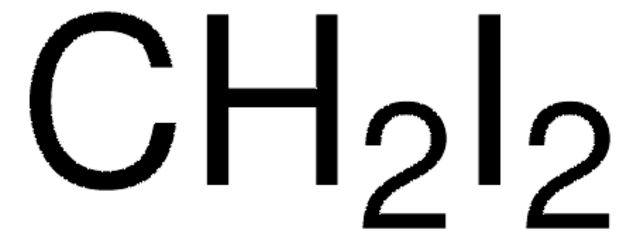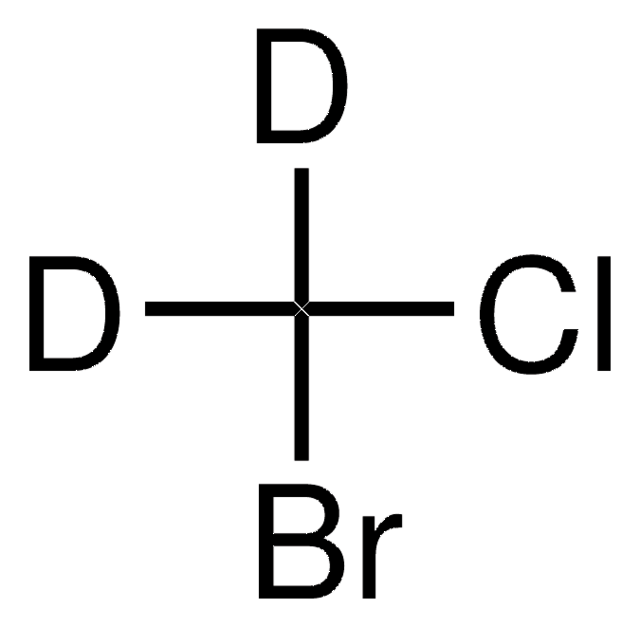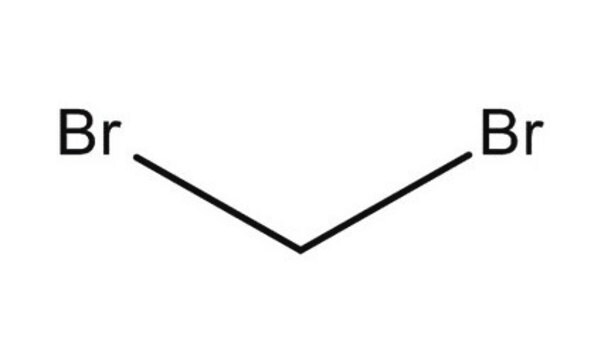135267
Bromochloromethane
contains 100 ppm BHT as inhibitor, ≥99.5%
Synonym(s):
Chlorobromomethane
About This Item
Recommended Products
vapor density
4.5 (vs air)
Quality Level
vapor pressure
117 mmHg ( 20 °C)
assay
≥99.5%
form
liquid
may contain
100 ppm BHT as inhibitor
refractive index
n20/D 1.482 (lit.)
bp
68 °C (lit.)
mp
−88 °C (lit.)
density
1.991 g/mL at 25 °C (lit.)
functional group
bromo
chloro
SMILES string
ClCBr
InChI
1S/CH2BrCl/c2-1-3/h1H2
InChI key
JPOXNPPZZKNXOV-UHFFFAOYSA-N
Looking for similar products? Visit Product Comparison Guide
Related Categories
General description
Application
signalword
Danger
hcodes
Hazard Classifications
Acute Tox. 4 Inhalation - Eye Dam. 1 - Ozone 1 - Skin Irrit. 2 - STOT SE 3
target_organs
Respiratory system
Storage Class
6.1C - Combustible acute toxic Cat.3 / toxic compounds or compounds which causing chronic effects
wgk_germany
WGK 2
flash_point_f
Not applicable
flash_point_c
Not applicable
ppe
Eyeshields, Gloves, type ABEK (EN14387) respirator filter
Choose from one of the most recent versions:
Already Own This Product?
Find documentation for the products that you have recently purchased in the Document Library.
Customers Also Viewed
Protocols
US EPA Method 8260 describes the analysis of volatile organic compounds in solid wastes and ground waters. This application illustrates the analysis of many compounds commonly analyzed by this method using purge and trap coupled to GC-MS.
Our team of scientists has experience in all areas of research including Life Science, Material Science, Chemical Synthesis, Chromatography, Analytical and many others.
Contact Technical Service















